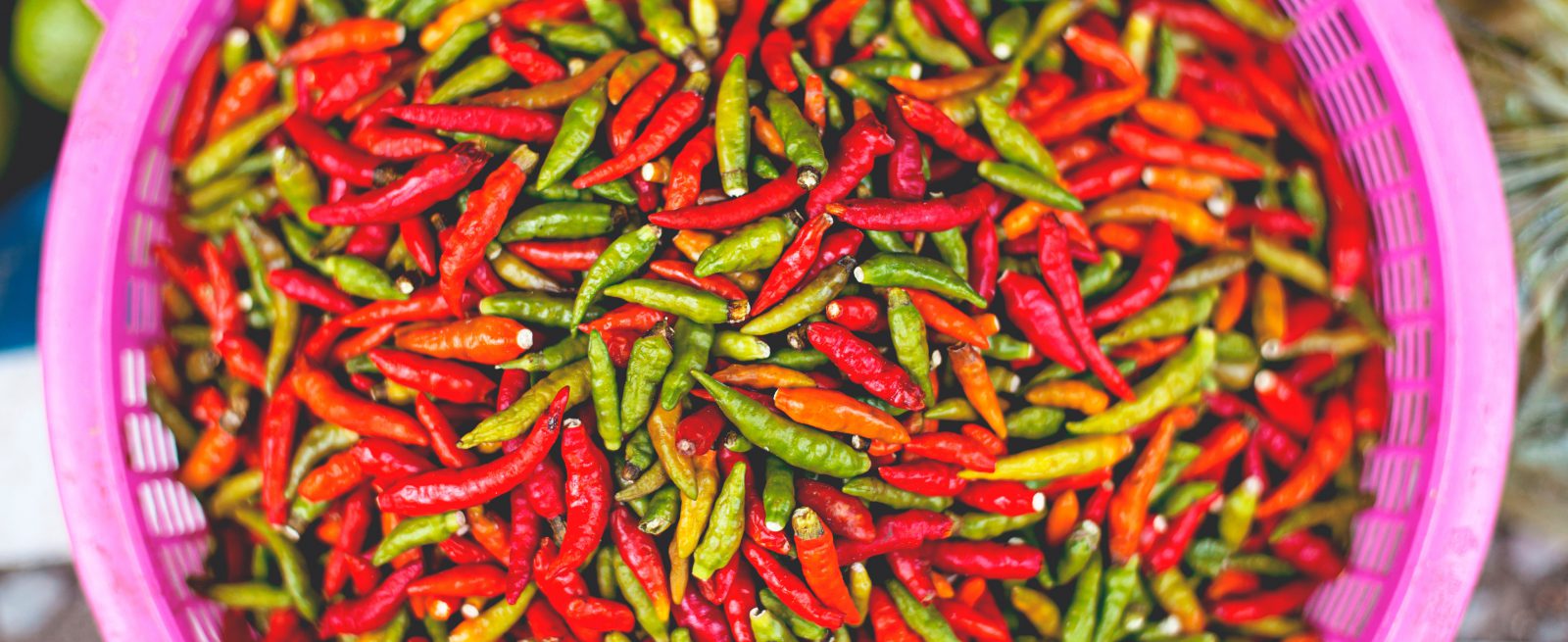What’s So Hot About Hot Sauce (Infographic)
3 Min Read By WebstaurantStore
Everyone’s heard of hot sauce. Nearly every nation has their own cultural rendition of a spicy condiment to enhance the flavor of their food. While hot sauce has been popular in the U.S. for decades, it’s become increasingly popular in recent years. Hot sauce is more than just a common part of street food, as there is a science behind how spicy each sauce is, as well as a history of hot sauce’s origins.
Most hot sauce is some combination of chili peppers, vinegar, and salt. Many hot sauces are fermented to add a funky flavor element. They can be liquid or paste, green, red or even brown. While there are other spicy condiments that get their heat from ingredients that aren’t chilies (Mustard sauce, Wasabi, Horseradish), we’ll just focus on chili-based sauces.
Most sources agree that hot sauce is an ancient invention that goes back as far as Mayan times. The first hot sauces were likely just a mixture of peppers and water, but it didn’t take long for people to begin breeding pepper plants to develop the most desirable traits in their peppers. Then, as with most foods, colonization led hot sauce to be evolved even further by introducing ingredients from other parts of the world, such as vinegar and other spices. It didn’t take long for spicy flavors to reach all corners of the globe after that.
In the 19th century, the Tabasco company brought hot sauce into the commercial scene by bottling and selling their products, mainly to hotels and restaurants. And today, there are countless varieties of hot sauce covering a broad spectrum of flavors, from sriracha to buffalo sauce.
What Makes Hot Sauce Hot?
The chemical that gives peppers their distinctive spicy flavor is called capsaicin. Sources believe that nature intended capsaicin to deter many animals from eating peppers, but the chemical has had the opposite effect… because spicy food is delicious. Fun fact! Most species of birds cannot taste the spiciness of capsaicin, likely so that they could help spread the seeds of pepper plants by ingesting and excreting them.
Chile, Chili or Chilli: What’s the Proper Pepper Spelling?
You’ll likely see two different spellings used to describe our spicy little peppers. And while they can be used interchangeably, you may find that certain regions tend to use one option more consistently than the others. For example, you’ll likely find “chilli” with two ls is most common in India and the UK, while South and Central America tend to use “chile” with an e… not to be confused with the country of Chile, which is spelled the same, but is unrelated to the origins of this word.
Also, here in the U.S., chili with one l is the preferred spelling of the pepper, but it also refers to the beef stew that stems from Mexican chili con carne, which includes chili powder, beef, onion, tomatoes, and sometimes beans.
Styles of Hot Sauce by Region
Just like most foods, there are people who craft specialty hot sauce and incorporate unique flavors into the mix. You can find artisanal hot sauces with fruity elements such as pineapple, mango and even blackberry. But most hot sauce types are defined by the region from which they originate.
When it comes to measuring the pungency of a spicy food, experts refer to the Scoville scale. This system was developed in 1912 by pharmacist Wilbur Scoville as a means to measure the level of capsaicinoids (which includes all the spicy chemicals, not just capsaicin) in a particular substance. The unit of measure in this scale is Scoville heat units (SHU) and is a useful bit of knowledge when examining or discussing the spiciness of a particular food. SHUs can also be used for non-food items, such as law-enforcement-grade pepper spray, which can be anywhere between 2 to 5 million SHU.
While tasting spiciness can be a somewhat subjective thing, measuring the chemicals on the Scoville scale provides an objective means of communicating just how hot something is. And while chili peppers may come in all different shapes, sizes, colors, flavors… and even spellings, the fact that spicy foods can be found in nearly every country on earth is a unifying quality. Humans have enjoyed hot sauce since ancient times and, as with so many foods, it can serve as an international language to bring different people together and find common ground.



